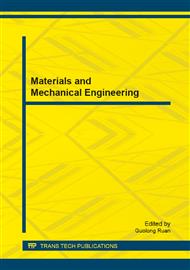p.107
p.112
p.118
p.127
p.132
p.138
p.144
p.149
p.153
First-Principles Study on the Corrosion Mechanism of Degradable Medical Mg Alloys in the Medium Containing Cl-
Abstract:
A first-principles plane-wave pseudopotential method based on Density Functional Theory (DFT) has been used to perform a comparative theoretical study of the adsorption H2O and Cl- on a degradable medical Mg alloy (0001) surface. It is found that H2O molecules bind preferentially at atop sites with a large tilt angle away from the surface normal, Cl- ions are energetically favoured adsorbed on hcp hollow sites. In the aqueous solution containing Cl-, the preferential adsorption of Cl- over H2O on Mg surface prevents the Mg surface passivation and induces the corrosion of degradable medical Mg alloys. For H2O adsorption, the ineraction between H2O molecule and Mg surface makes Mg hydration, and thereby Mg alloy surface passivates and the formation of the protective Mg(OH)2. For Cl- ion adsorption, a 0.44e charge translation from Cl- ion to the Mg alloy surface makes the corrosion potential of Mg alloy surface negativly shifted. Thereby, the activity and the corrosion of magnesium alloy are enhanced. This can explain why degradable medical magnesium alloys corrode quickly in physiological media containing high concentrations of chloride ions.
Info:
Periodical:
Pages:
132-137
Citation:
Online since:
February 2014
Authors:
Price:
Сopyright:
© 2014 Trans Tech Publications Ltd. All Rights Reserved
Share:
Citation:


